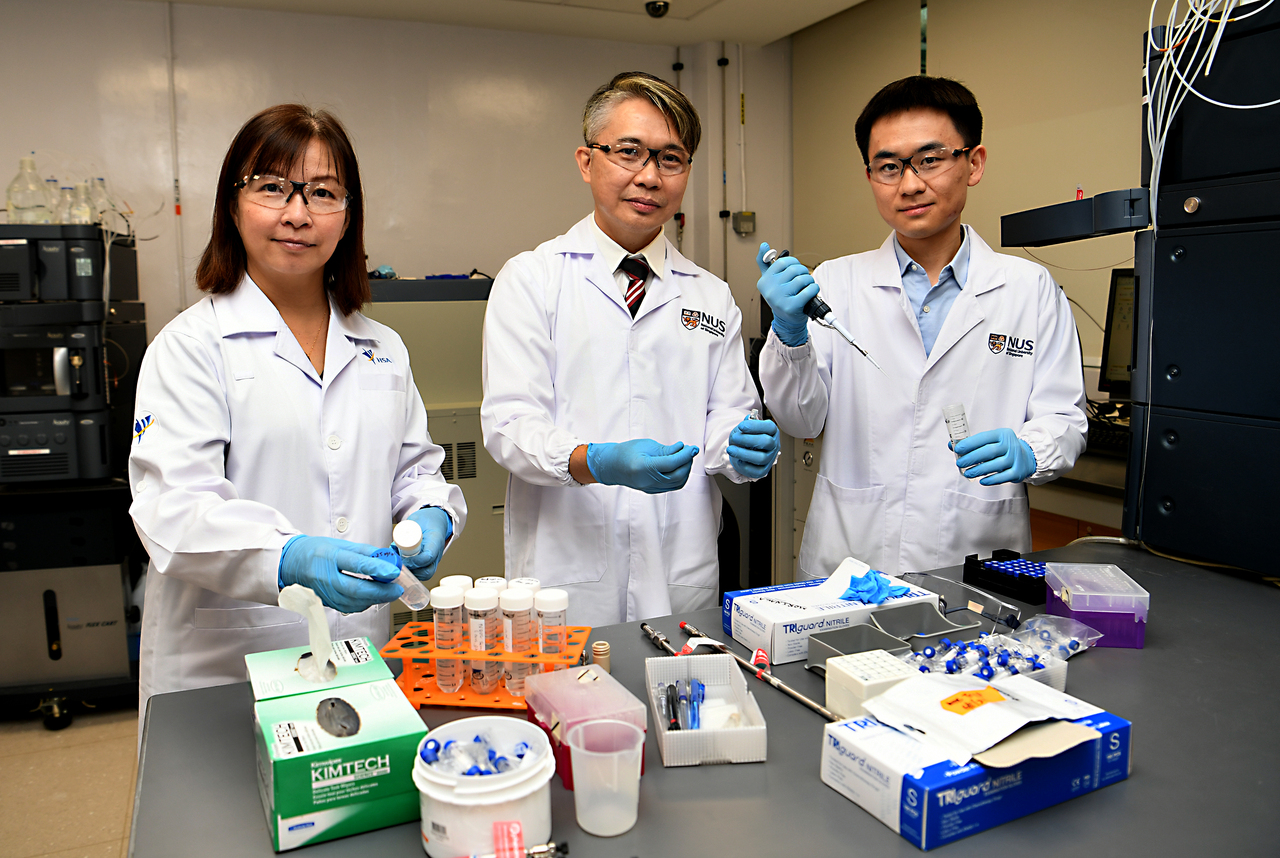NUS researchers find a new method to detect designer drug abuse
Sign up now: Get ST's newsletters delivered to your inbox

(From left) HSA Analytical Toxicology Laboratorydirector Moy Hooi Yan, NUS Pharmacy Professor Eric Chan Chun Yong and Research Fellow Wang Ziteng.
ST PHOTO: KHALID BABA
Follow topic:
SINGAPORE - Researchers from the National University of Singapore (NUS) have come up with a new way to boost surveillance for designer drug abuse, and it could be helpful for forensic teams both here and abroad.
Designer drugs, or new psychoactive substances, are often illegally created in a laboratory, and are designed to mimic the effects of controlled drugs such as cocaine, cannabis, ecstasy and LSD.
These drugs are often made with different chemical structures to circumvent legislative bans. One such class of drugs would be synthetic cannabinoids, which are designed to replicate the effects of cannabis.
In a research study led by Professor Eric Chan from the NUS Department of Pharmacy, three new urinary biomarkers that could be used to detect consumption of ADB-BUTINACA, an emerging synthetic cannabinoid, were identified.
The study, done in collaboration with the Health Sciences Authority's Analytical Toxicology Laboratory, was published in the journal Clinical Chemistry on Aug 13.
ADB-BUTINACA was first identified in Europe in 2019, and entered Singapore last year.
As most synthetic cannabinoids are extensively metabolised, or broken down in the body after consumption, they become virtually undetectable in urine samples, noted Prof Chan.
He added that conventional methods involve looking at the chemical structures of similar synthetic cannabinoids with known metabolites, which are then used by forensic scientists to predict the possible metabolites of new synthetic cannibinoids which could show up in urine.
Metabolites are small molecules which are intermediate or end products of metabolism.
However, such a method may not necessarily be the most accurate as tweaks in the chemical structure of each new drug could affect the way it is metabolised in the body, said Prof Chan.
The three metabolites from ADB-BUTINACA which have been used as reference standards for routine forensic monitoring were found to be absent or detected at lower concentrations in some urine samples of drug abusers.
"This created an impetus to identify other potential metabolites for use as urinary biomarkers for people who had consumed this particular cannabinoid," said Prof Chan.
So the research team used human liver enzymes in the laboratory to break down ADB-BUTINACA into its metabolites.
"Based on our knowledge of how drug metabolism works, we then performed experiments to understand how the liver and kidney handle these metabolites. From there, we determined which metabolites are the major ones that can be used as potential biomarkers in urine," he said.
The team found that 15 metabolites were produced, of which four are abundantly excreted in urine and could be used as urinary biomarkers.
Three of them were new biomarkers while one of the metabolites also corresponded to the existing reference standard identified earlier. Although it was metabolised in small amounts by the liver, a large portion of the metabolite was excreted by the kidney into urine.
Therefore, it can also be counted as a urinary biomarker, said Prof Chan.
The other metabolites were either absent or present in very small traces in the urine, due to further metabolism or excretion in faeces, added Prof Chan.
Now that these four metabolites have been identified, they can be added to an existing database for drug urine tests to determine if ADB-BUTINACA has been consumed.
This approach can also be used in future to identify the correct urine biomarkers in new synthetic cannabinoids, said Prof Chan.
The team is looking to better understand how the metabolites of ADB-BUTINACA and other new synthetic cannabinoids are excreted by the kidneys so their presence in urine can be better predicted.

